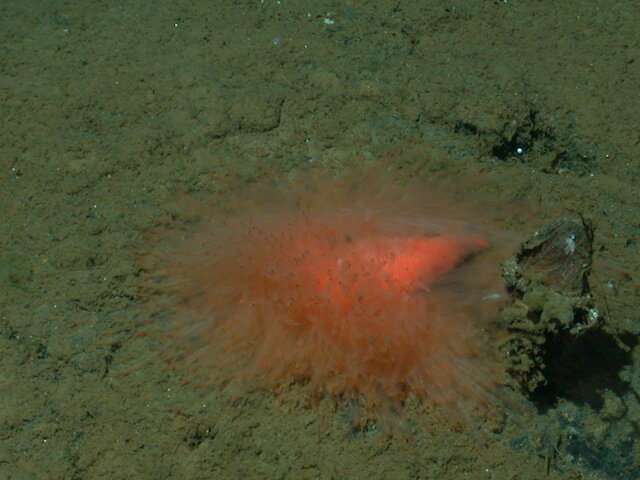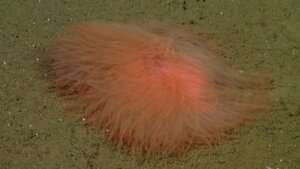Robots documenting deep-sea biodiversity reveal a spectacular spaghetti worm

MBARI's remotely operated vehicles (ROVs) have helped shed new light on the mysteries of the deep. We have logged over 6,100 deep-sea dives, yet every time our vehicles descend into the depths, we manage to learn something new. From time to time, we come across an animal that stumps our scientists.
During one of MBARI's expeditions to Mexico's Gulf of California, researchers observed what looked like small pom-poms lying on the seafloor. These mystery masses turned out to be a spectacular type of spaghetti worm: Biremis.
This shaggy species was previously known solely from the Bahamas. Upon further examination and DNA testing by our expert collaborators at Scripps Institution of Oceanography, we realized we had encountered a new species of Biremis.
Biremis has no eyes, no gills, and lacks obvious chaetae, or bristles, along its body segments. It is also unusual because its tentacles are inflated, giving it the pom-pom appearance that caught the researchers' attention. The Gulf of California species is deep-dwelling, with the majority of our observations deeper than 2,000 meters (6,600 feet). It remains undescribed, but the team is hoping to formally publish a detailed description in the scientific literature after we know more about its appearance, genetics, and natural history.
Spaghetti worms are a type of polychaete worm grouped in the family Terebellidae. Scientists have described about 400 different species of terebellids, which are found worldwide. They're relatively common and characteristically have numerous grooved tentacles for feeding. Like other terebellids, Biremis lives on the ocean bottom, but while most live in a tube or burrow, this species has been observed resting on the seafloor or swimming just above it. Swimming freely allows the worm to easily move around and find new places to feed. Biremis uses its bountiful bundle of non-retractile tentacles to harvest particles of marine snow that have settled on the seafloor. If you look closely at the video, you can see the trail the animal has made in the mud.
Scientists have discovered and named more than 12,000 living species of polychaetes. MBARI's ROVs have given us many opportunities to observe the unique polychaetes that live in the deep sea, including worms that "dance" in the midwater, drop bioluminescent bombs, or digest decomposing bones.
No doubt many more wonderful worms like Biremis await discovery in the ocean's mysterious depths. Although giving a species its own name would seem to be a simple process, it actually takes a lot of time and dedication to collect specimens, examine key features that distinguish each species, sequence the DNA, and assign a scientific name. Over the past 35 years, MBARI researchers have discovered more than 240 new species, including 30 new worms.

Although we have yet to discover and describe the majority of species living deep beneath the ocean's surface, these animals face a fragile future. Threats like overfishing, pollution, and climate change extend to the waters deep beneath the surface too. Because we know so little about the deep ocean, MBARI's efforts to document the diversity of life in this realm are laying the foundation to understand how these threats will affect deep-sea communities.
Provided by Monterey Bay Aquarium Research Institute





















